新闻中心
产品中心
联系我们

深圳市东么川伺服控制技术有限公司
电话:13316379101
邮箱:1355229533@qq.com
地址:深圳市龙华区民治街道樟坑社区青创城A栋B502
控制电机的术语及定义中英文翻译
发布时间:2020-09-11 07:43:27
Electric Motor Definitions and Terminology

Angular accuracy 角度精度
The measure of shaft positioning accuracy on a servo or stepping motor.
Back EMF 反电动势
The voltage generated when a permanent magnet motor is rotated. This voltage is proportional to motor speed and is present regardless of whether the motor winding(s) are energized or de-energized.
Bipolar chopper driver 双极性斩波驱动器
A class of step motor driver which uses a switch mode (chopper) technique to control motor current and polarity. Bipolar indicates the capability of providing motor phase current of either polarity (+ or -).
Breakaway torque
The torque required to start a machine in motion. Almost always greater than the running torque.
Brushless motor 无刷电机
Class of motors that operate using electronic commutation of phase currents, rather than electromechanical (brush-type) commutation. Brushless motors typically have a permanent magnet rotor and a wound stator.
C-face mounting C型安装面
A standard NEMA mounting design, where the mounting holes in the face are threaded to receive the mating mount.
Class B insulation B级绝缘
A NEMA insulation specification. Class B insulation is rated to an operating (internal) temperature of 130°C.
Class F insulation F级绝缘
A NEMA insulation specification. Class F insulation is rated to an operating (internal) temperature of 155°C
Class H insulation H级绝缘
A NEMA insulation specification. Class H insulation is rated to an operating (internal) temperature of 180°C.
Closed loop 闭环
A broadly applied term, relating to any system in which the output is measured and compared to the input. The output is then adjusted to reach the desired condition. In motion control, the term typically describes a system utilizing a velocity and/or position transducer to generate correction signals in relation to desired parameters.
Cogging (Cogging torque) 齿槽效应
A term used to describe non-uniform angular velocity. Cogging appears as a jerkiness, especially at low speeds.
Commutation 换向
1. A term which refers to the action of steering currents or voltages to the proper motor phases so as to produce optimum motor torque. In brush type motors, commutation is done
electromechanically via the brushes and commutator. In brushless motors, commutation is done by the switching electronics using rotor position information obtained by Hall sensors, a Tachsyn, or a resolver.
2. Commutation of step motors is normally done open loop. Feedback from the motor is not required to hold rotor position precisely.
Continuous rated current (ICR) (Amperes) 连续额定电流
The maximum allowable continuous current a motor can handle without exceeding the motor temperature limits
Continuous rated torque (TCR) (lb-in.) 连续额定转矩
The maximum allowable continuous torque a motor can handle without exceeding the motor temperature limits
Continuous stall current (ICS) (Amperes) 连续堵转电流
Amount of current applied to a motor (at locked rotor conditions), which results in rated temperature rise. Refer also to definition of "Continuous stall torque"
Continuous stall torque (TCS) (lb-in.) 连续堵转转矩
The amount of torque at zero speed, which a motor can continuously deliver without exceeding its thermal rating. Determined by applying DC current through two windings with rotor locked, while monitoring temperature. Specified with motor windings at maximum rated temperature, with motor in 25 degrees C ambient, mounted to a heat sink. Refer to individual specs for heat sink size.
Current at peak torque (IPK) (Amperes) 峰值电流
The amount of input current required to develop "peak torque". This is often outside the linear torque/current relationship.
Current, Rated 额定电流
The maximum allowable continuous current a motor can handle without exceeding motor temperature limits.
D-flange mounting D型法兰安装
This type of mount has clearance holes on the flange, and the mounting bolts stick out through the flange from the motor side. This mount is common in cases where the motor is integral to the machine.
Demag current 退磁电流
The current level at which the motor magnets will start to be demagnetized. This is an irreversible effect, which will alter the motor characteristics and degrade performance. Also known as peak current.
Detent torque 定位转矩
The maximum torque that can be applied to an unenergized step motor without causing continuous rotating motion.
DPBV – Drip proof Blower Ventilated 强制风冷电机
Type of motor cooled by blowing air through the inside of the motor using an attached blower.
Drive 驱动器(交流或无刷伺服的)
An electronic device that controls torque, speed and/or position of an AC or brushless motor. Typically a feedback device is mounted on the motor for closed-loop control of current, velocity and position.
Driver驱动器(步进)
Electronics which convert step and direction inputs to high power currents and voltages to drive a step motor. The step motor driver is analogous to the servomotor amplifier's logic.
Duty cycle 工作制
For a repetitive cycle, the ratio of on time to total cycle time.
Duty cycle (%) = [On time / (On time + Off time)] x 100%
Dynamic braking 能耗制动
A passive technique for stopping a permanent magnet brush or brushless motor. The motor windings are shorted together through a resistor which results in motor braking with an exponential decrease in speed.
Efficiency 效率
The ratio of power output to power input.
Electrical time constant (te) (Seconds) 电气时间常数
The time required for current to reach 63.2% of its final value for a fixed voltage level. Can be calculated from the relationship te=L/R where L is inductance (henries) and R is resistance (ohms).
Encoder 编码器
A feedback device which converts mechanical motion into electronic signals. The most commonly used, rotary encoders, output digital pulses corresponding to incremental angular motion. For example, a 1000-line encoder produces 1000 pulses every mechanical revolution. The encoder consists of a glass or metal wheel with alternating transparent and opaque stripes, detected by optical sensors to produce the digital outputs.
Feedback 反馈
A signal which is transferred from the output back to the input for use in a closed loop system.
Ferrite 铁氧体
A type of permanent magnet consisting of ceramic compounds made up of oxides of iron, barium and strontium.
Form factor 波形系数
The ratio of RMS current to average current. This number is a measure of the current ripple in a SCR or other switch-mode type of drive. Since motor heating is a function of RMS current while motor torque is a function of average current, a form factor greater than 1.00 means some fraction of motor current is producing heat but not torque.
Four quadrant 四象限
Refers to a motion system which can operate in all four quadrants; i.e., velocity in either direction and torque in either direction. This means that the motor can accelerate, run, and decelerate in either direction.
Friction 摩擦
A resistance to motion caused by contact with a surface. Friction can be constant with varying speed (Coulomb friction) or proportional to speed (viscous friction).
Hall sensor 霍尔传感器
A feedback device which is used in a brushless servo system to provide information for the amplifier to electronically commutate the motor. The device uses a magnetized wheel and hall effect sensors to generate the commutation signals.
Holding torque 保持转矩
Sometimes called static torque, holding torque specifies the maximum external torque that can be
applied to a stopped, energized motor without causing the rotor to rotate. Generally used as a figure of merit when comparing motors.
Horsepower 马力
An index of the amount of work a machine or motor can perform. One horsepower is equal to 746 watts. Since power is equal to torque multiplied by speed, horsepower is a measure of a motor's torque and speed capability; e.g., a 1 HP motor will produce 36 lb-in. at 1,750 rpm.
Formula:
HP = Torque (lb-in.) x Speed (RPM)/63,025
or
HP = Torque (lb-ft.) x Speed (RPM)/5,252
or
HP = Volts x Amps x Efficiency/746
Hybrid step motor 混合式步进电机
A motor designed to move in discrete increments of steps. The motor has a permanent magnet rotor and a wound stator. Such motors are brushless. Phase currents are commutated as a function of time to produce motion.
Idle current reduction 静止电流减小功能
A step motor driver feature that reduce the phase current to the motor when no motor motion is commanded (idle condition) for a specified period of time. Idle current reduction reduces motor heating and allows high machine throughputs from a given motor.
Indexer 控制器
Electronics which convert high level motion commands from a host computer, PLC or operator panel into step and direction pulse streams for use by the step motor driver. Indexers can be broadly divided into two classes. A preset indexer typically accepts distance, velocity and ramp time inputs only. The more sophisticated programmable indexer is capable of complex motion control and includes program memory.
Inductance (L) (mH - millihenries line-to-line) 电感
The electrical equivalent to mechanical inertia; that is, the property of a circuit, which has a tendency to resist current flow when no current is flowing, and when current is flowing has a tendency to maintain that current flow. Pacific Scientific measures inductance (line-to-line) with a bridge at 1000 Hz and with the rotor positioned so the back-EMF waveform is at the peak of the sinusoid.
Inductance (mutual) 电感
Mutual inductance is the property that exists between two current carrying conductors or coils when magnetic lines of force from one link with those of the other.
Inertial match 转动惯量匹配
For most efficient operation, the system coupling ratio should be selected so that the reflected inertia of the load is equal to the rotor inertia of the motor.
Insulation Class 绝缘等级
The rating assigned to the maximum temperature capability of the insulating components in a motor or other piece of equipment.
Mechanical time constant (tm) (Seconds) 机械时间常数
In a simple first order system, the time required for the motor's speed to attain 63.2% of its final value for a fixed voltage level. Can be calculated from:
where: J is inertia in lb-in./s2
R is resistance in ohms
KT is torque constant in lb-in./amp.
8.87 is a conversion factor
tM is calculated in seconds
Microstepping 细分
An electronic technique for increasing a step motor's position resolution and velocity smoothness by appropriately scaling the phase currents. Microstepping is also a technique used to reduce or eliminate the effects of system resonance at low speeds.
Mid-range instability 中颇不稳定性
A phenomenon in which a step motor can fall out of synchronism due to a loss of torque at mid-range speeds. The torque loss is due to the interaction of the motor's electrical characteristics and the driver's electronics. Some drivers have circuitry to eliminate or reduce the effects of mid-range instability.
NEMA - National Electrical Manufacturer's Association 国家电气厂商协会
Acronym for an organization which sets standards for motors and other industrial electrical equipment.
NTC - Negative Temperature Coefficient 负温度系数
A negative temperature coefficient thermistor is used to detect and protect a motor winding from exceeding its maximum temperature rating. Resistance of the device decreases with an increase in temperature.
Open-loop 开环
A system in which there is no feedback. Motor motion is expected to faithfully follow the input command. Stepping motor systems are an example of open-loop control.
Overload capacity 过载能力
The ability of a drive to withstand currents above its continuous rating. It is defined by NEMA as 150% of the rated full-load current for "standard industrial DC motors" for one minute.
Peak torque (Tpk) (lb-in.) 峰值转矩
The maximum torque a brushless motor can deliver for short periods of time. Operating PacTorq motors above the maximum torque value can cause demagnetization of the rare-earth magnets. This is an irreversible effect that will alter the motor characteristics and degrade performance. This is also known as peak current.
Not to be confused with system peak torque, which is often determined by amplifier peak current limitations, where peak current is typically two times continuous current.
Poles 极数
Refers to the number of magnetic poles arranged on the rotor of the brushless motor. Unlike an AC motor, the number of poles has no direct relationship to the base speed of the motor.
Power factor 功率因数
Ratio of true power (kW) to apparent power (kVA).
PTC - Positive Temperature Coefficient 正温度系数
A positive temperature coefficient thermistor is used to detect and protect a motor winding from exceeding its maximum temperature rating. Resistance of the device increases with an increase in temperature.
Pull-out torque 拉出转矩
The maximum friction load, at a particular inertial load, that can be applied to the shaft of a synchronous motor (running at constant speed) and not cause it to lose synchronism.
Pulse rate 脉冲率
The frequency of the step pulses applied to a step motor driver. The pulse rate, multiplied by the resolution of the motor/driver combination (in steps per revolution), yields the rotational speed in revolutions per second.
Pulse Width Modulation (PWM) 脉冲宽度调制
1. A PWM controller (amplifier) switches DC supply voltage on and off at fixed frequencies. The length of the on/off interval or voltage waveform is variable.
2. Pulse width modulation (PWM), describes a switch-mode (as opposed to linear) control technique used in amplifiers and drivers to control motor voltage and current. PWM offers greatly improved efficiency compared to linear techniques.
Regeneration 再生制动
The action during motor braking, in which the motor acts as a generator and takes kinetic energy from the load, converts it to electrical energy, and returns it to the amplifier.
Repeatability 重复性
The degree to which a parameter such as position or velocity can be duplicated.
Resistance, Hot (RH)(Ohms line-to-line) 热态电阻
The motor's terminal resistance value specified at the hot winding temperature, which is at the motor's maximum rated temperature.
Resolution 风辨率
The smallest increment into which a parameter can be broken down. For example, a 1000 line encoder has a resolution of 1/1000 of a revolution.
Resolver 旋转变压器
An electromagnetic feedback device which converts angular shaft position into analog signals. These signals can be processed in various ways, such as with an RDC (resolver-to-digital converter) to produce digital position information. There are two basic types of resolvers; transmitter and receiver. A transmitter-type is designed for rotor primary excitation and stator secondary outputs. Position is determined by the ratio of the sine output amplitude to cosine output amplitude. A receiver-type is designed for stator primary excitations and rotor secondary output. Position is determined by the phase shift between the rotor output signal and one of the primary excitation signals.
Resonance 共振
Oscillatory behavior caused by mechanical limitations.
Restart torque
The maximum friction load, at a particular inertial load, that can be applied to the shaft of a synchronous motor without causing it to lose synchronism when accelerating to a constant speed from standstill.
Ringing 振荡
Oscillation of a system following a sudden change in state.
RMS Current - Root Mean Square Current 有效值电流
In an intermittent duty cycle application, the RMS current is equal to the value of steady state current which would produce the equivalent motor heating over a period of time.
RMS Torque - Root Mean Square Torque. 有效值转矩
In an intermittent duty cycle application, the RMS torque is equal to the value of steady state torque which would produce the equivalent motor heating over a period of time.
Rotor 转子
The moving part of the motor, consisting of the shaft and magnets. These magnets are analogous to the field winding of a brush-type DC motor.
Settling time 调整时间
The time required for a parameter to stop oscillating or ringing and reach its final value.
Shock loading 冲击性负载
A load that produces extremely high peak torques for very short durations. This type of load is associated with conveyorized grinding, crushing and separation processes.
Stall Torque 堵转转矩
The amount of torque developed with voltage applied and shaft locked, or not rotating. Also known as locked-rotor torque.
Stator 定子
The non-moving part of the motor. Specifically, it is the iron core with the wire winding in it that is pressed into the frame shell. The winding pattern determines the voltage constant of the motor.
Step angle 步距角
The angular distance the shaft rotates upon receipt of a single step command.
Stiffness 刚性
The ability to resist movement induced by an applied torque. Stiffness is often specified as a torque displacement curve, indicating the amount a motor shaft will rotate upon application of a known external force when stopped.
Synchronism 同步
A motor rotating at a speed corresponding correctly to the applied step pulse frequency is said to be in synchronism. Load torques in excess of the motor's capacity (rated torque) will cause a loss of synchronism. This condition is not damaging to a step motor.
TENV - Totally Enclosed Non-Ventilated 全封闭自然风冷电机
Acronym describing a type of motor enclosure, which has no outside air going into it. It is cooled only by convection to the frame, which is usually finned.
Thermal protection 热保护
A thermal sensing device mounted to the motor to protect it from overheating. This is accomplished by disconnecting the motor phases from the drive in an over temperature condition.
Thermal resistance (Rth) (°C/watt) 热阻
An indication of how effectively a unit rids itself of heat; a measure of temperature rise per watts lost. In Pacific Scientific literature, it is the specified value from the motor windings to the ambient, under locked rotor conditions.
Thermal time constant (tth) (minutes) 热稳定时间
The time required for a motor to attain 63.2% of its final temperature for a fixed power input.
Torque Constant (KT = lb-ft./A) 转矩常数
An expression of the relationship between input current and output torque. For each ampere of current, a fixed amount of torque is produced.
Torque-to-inertia ratio 转矩惯量比
Defined as the motor's holding torque divided by the inertia of its rotor. The higher the ratio, the higher a motor's maximum acceleration capability will be.
Unipolar driver 单极性驱动器
A step motor driver configuration that uses a unipolar power supply and is capable of driving phase current in only one direction. The motor phase winding must be center tapped (6 or 8 lead) to operate with a unipolar driver. The center tap is used instead of providing the current reversal of a bipolar driver.
Viscous Damping (KDV) (lb-in./kRPM) 粘性损耗
Inherent losses are present in all motors which result in lower torque delivered at the output shaft than developed at the rotor. Losses which are proportional to speed (i.e. speed dependent terms such as windage, friction, eddy current) are related through the motor's "viscous damping" constant, measured as the slope of the damping curve.
Voltage constant (KE) (V/kRPM peak, line-to-line) 反电势常数
May also be termed back-EMF constant. When a motor is operated, it generates a voltage proportional to speed, but opposing the applied voltage. The shape of the voltage waveform depends upon the specific motor design. For example, in a brushless motor, the waveshape may be trapezoidal or sinusoidal in nature. All Pacific Scientific brushless motor designs have a sinusoidal voltage constant. For a sine waveform, the voltage constant can be measured from line-to-neutral or line-to-line and expressed as a peak value or "RMS" value.
以上电机术语的中文名称,因凭记忆,未查相关标准,如有错误,请反馈给我,谢谢!如对术语不理解,我也可以提供术语定义的中文翻译。

Angular accuracy 角度精度
The measure of shaft positioning accuracy on a servo or stepping motor.
Back EMF 反电动势
The voltage generated when a permanent magnet motor is rotated. This voltage is proportional to motor speed and is present regardless of whether the motor winding(s) are energized or de-energized.
Bipolar chopper driver 双极性斩波驱动器
A class of step motor driver which uses a switch mode (chopper) technique to control motor current and polarity. Bipolar indicates the capability of providing motor phase current of either polarity (+ or -).
Breakaway torque
The torque required to start a machine in motion. Almost always greater than the running torque.
Brushless motor 无刷电机
Class of motors that operate using electronic commutation of phase currents, rather than electromechanical (brush-type) commutation. Brushless motors typically have a permanent magnet rotor and a wound stator.
C-face mounting C型安装面
A standard NEMA mounting design, where the mounting holes in the face are threaded to receive the mating mount.
Class B insulation B级绝缘
A NEMA insulation specification. Class B insulation is rated to an operating (internal) temperature of 130°C.
Class F insulation F级绝缘
A NEMA insulation specification. Class F insulation is rated to an operating (internal) temperature of 155°C
Class H insulation H级绝缘
A NEMA insulation specification. Class H insulation is rated to an operating (internal) temperature of 180°C.
Closed loop 闭环
A broadly applied term, relating to any system in which the output is measured and compared to the input. The output is then adjusted to reach the desired condition. In motion control, the term typically describes a system utilizing a velocity and/or position transducer to generate correction signals in relation to desired parameters.
Cogging (Cogging torque) 齿槽效应
A term used to describe non-uniform angular velocity. Cogging appears as a jerkiness, especially at low speeds.
Commutation 换向
1. A term which refers to the action of steering currents or voltages to the proper motor phases so as to produce optimum motor torque. In brush type motors, commutation is done
electromechanically via the brushes and commutator. In brushless motors, commutation is done by the switching electronics using rotor position information obtained by Hall sensors, a Tachsyn, or a resolver.
2. Commutation of step motors is normally done open loop. Feedback from the motor is not required to hold rotor position precisely.
Continuous rated current (ICR) (Amperes) 连续额定电流
The maximum allowable continuous current a motor can handle without exceeding the motor temperature limits
Continuous rated torque (TCR) (lb-in.) 连续额定转矩
The maximum allowable continuous torque a motor can handle without exceeding the motor temperature limits
Continuous stall current (ICS) (Amperes) 连续堵转电流
Amount of current applied to a motor (at locked rotor conditions), which results in rated temperature rise. Refer also to definition of "Continuous stall torque"
Continuous stall torque (TCS) (lb-in.) 连续堵转转矩
The amount of torque at zero speed, which a motor can continuously deliver without exceeding its thermal rating. Determined by applying DC current through two windings with rotor locked, while monitoring temperature. Specified with motor windings at maximum rated temperature, with motor in 25 degrees C ambient, mounted to a heat sink. Refer to individual specs for heat sink size.
Current at peak torque (IPK) (Amperes) 峰值电流
The amount of input current required to develop "peak torque". This is often outside the linear torque/current relationship.
Current, Rated 额定电流
The maximum allowable continuous current a motor can handle without exceeding motor temperature limits.
D-flange mounting D型法兰安装
This type of mount has clearance holes on the flange, and the mounting bolts stick out through the flange from the motor side. This mount is common in cases where the motor is integral to the machine.
Demag current 退磁电流
The current level at which the motor magnets will start to be demagnetized. This is an irreversible effect, which will alter the motor characteristics and degrade performance. Also known as peak current.
Detent torque 定位转矩
The maximum torque that can be applied to an unenergized step motor without causing continuous rotating motion.
DPBV – Drip proof Blower Ventilated 强制风冷电机
Type of motor cooled by blowing air through the inside of the motor using an attached blower.
Drive 驱动器(交流或无刷伺服的)
An electronic device that controls torque, speed and/or position of an AC or brushless motor. Typically a feedback device is mounted on the motor for closed-loop control of current, velocity and position.
Driver驱动器(步进)
Electronics which convert step and direction inputs to high power currents and voltages to drive a step motor. The step motor driver is analogous to the servomotor amplifier's logic.
Duty cycle 工作制
For a repetitive cycle, the ratio of on time to total cycle time.
Duty cycle (%) = [On time / (On time + Off time)] x 100%
Dynamic braking 能耗制动
A passive technique for stopping a permanent magnet brush or brushless motor. The motor windings are shorted together through a resistor which results in motor braking with an exponential decrease in speed.
Efficiency 效率
The ratio of power output to power input.
Electrical time constant (te) (Seconds) 电气时间常数
The time required for current to reach 63.2% of its final value for a fixed voltage level. Can be calculated from the relationship te=L/R where L is inductance (henries) and R is resistance (ohms).
Encoder 编码器
A feedback device which converts mechanical motion into electronic signals. The most commonly used, rotary encoders, output digital pulses corresponding to incremental angular motion. For example, a 1000-line encoder produces 1000 pulses every mechanical revolution. The encoder consists of a glass or metal wheel with alternating transparent and opaque stripes, detected by optical sensors to produce the digital outputs.
Feedback 反馈
A signal which is transferred from the output back to the input for use in a closed loop system.
Ferrite 铁氧体
A type of permanent magnet consisting of ceramic compounds made up of oxides of iron, barium and strontium.
Form factor 波形系数
The ratio of RMS current to average current. This number is a measure of the current ripple in a SCR or other switch-mode type of drive. Since motor heating is a function of RMS current while motor torque is a function of average current, a form factor greater than 1.00 means some fraction of motor current is producing heat but not torque.
Four quadrant 四象限
Refers to a motion system which can operate in all four quadrants; i.e., velocity in either direction and torque in either direction. This means that the motor can accelerate, run, and decelerate in either direction.
Friction 摩擦
A resistance to motion caused by contact with a surface. Friction can be constant with varying speed (Coulomb friction) or proportional to speed (viscous friction).
Hall sensor 霍尔传感器
A feedback device which is used in a brushless servo system to provide information for the amplifier to electronically commutate the motor. The device uses a magnetized wheel and hall effect sensors to generate the commutation signals.
Holding torque 保持转矩
Sometimes called static torque, holding torque specifies the maximum external torque that can be
applied to a stopped, energized motor without causing the rotor to rotate. Generally used as a figure of merit when comparing motors.
Horsepower 马力
An index of the amount of work a machine or motor can perform. One horsepower is equal to 746 watts. Since power is equal to torque multiplied by speed, horsepower is a measure of a motor's torque and speed capability; e.g., a 1 HP motor will produce 36 lb-in. at 1,750 rpm.
Formula:
HP = Torque (lb-in.) x Speed (RPM)/63,025
or
HP = Torque (lb-ft.) x Speed (RPM)/5,252
or
HP = Volts x Amps x Efficiency/746
Hybrid step motor 混合式步进电机
A motor designed to move in discrete increments of steps. The motor has a permanent magnet rotor and a wound stator. Such motors are brushless. Phase currents are commutated as a function of time to produce motion.
Idle current reduction 静止电流减小功能
A step motor driver feature that reduce the phase current to the motor when no motor motion is commanded (idle condition) for a specified period of time. Idle current reduction reduces motor heating and allows high machine throughputs from a given motor.
Indexer 控制器
Electronics which convert high level motion commands from a host computer, PLC or operator panel into step and direction pulse streams for use by the step motor driver. Indexers can be broadly divided into two classes. A preset indexer typically accepts distance, velocity and ramp time inputs only. The more sophisticated programmable indexer is capable of complex motion control and includes program memory.
Inductance (L) (mH - millihenries line-to-line) 电感
The electrical equivalent to mechanical inertia; that is, the property of a circuit, which has a tendency to resist current flow when no current is flowing, and when current is flowing has a tendency to maintain that current flow. Pacific Scientific measures inductance (line-to-line) with a bridge at 1000 Hz and with the rotor positioned so the back-EMF waveform is at the peak of the sinusoid.
Inductance (mutual) 电感
Mutual inductance is the property that exists between two current carrying conductors or coils when magnetic lines of force from one link with those of the other.
Inertial match 转动惯量匹配
For most efficient operation, the system coupling ratio should be selected so that the reflected inertia of the load is equal to the rotor inertia of the motor.
Insulation Class 绝缘等级
The rating assigned to the maximum temperature capability of the insulating components in a motor or other piece of equipment.
Mechanical time constant (tm) (Seconds) 机械时间常数
In a simple first order system, the time required for the motor's speed to attain 63.2% of its final value for a fixed voltage level. Can be calculated from:
where: J is inertia in lb-in./s2
R is resistance in ohms
KT is torque constant in lb-in./amp.
8.87 is a conversion factor
tM is calculated in seconds
Microstepping 细分
An electronic technique for increasing a step motor's position resolution and velocity smoothness by appropriately scaling the phase currents. Microstepping is also a technique used to reduce or eliminate the effects of system resonance at low speeds.
Mid-range instability 中颇不稳定性
A phenomenon in which a step motor can fall out of synchronism due to a loss of torque at mid-range speeds. The torque loss is due to the interaction of the motor's electrical characteristics and the driver's electronics. Some drivers have circuitry to eliminate or reduce the effects of mid-range instability.
NEMA - National Electrical Manufacturer's Association 国家电气厂商协会
Acronym for an organization which sets standards for motors and other industrial electrical equipment.
NTC - Negative Temperature Coefficient 负温度系数
A negative temperature coefficient thermistor is used to detect and protect a motor winding from exceeding its maximum temperature rating. Resistance of the device decreases with an increase in temperature.
Open-loop 开环
A system in which there is no feedback. Motor motion is expected to faithfully follow the input command. Stepping motor systems are an example of open-loop control.
Overload capacity 过载能力
The ability of a drive to withstand currents above its continuous rating. It is defined by NEMA as 150% of the rated full-load current for "standard industrial DC motors" for one minute.
Peak torque (Tpk) (lb-in.) 峰值转矩
The maximum torque a brushless motor can deliver for short periods of time. Operating PacTorq motors above the maximum torque value can cause demagnetization of the rare-earth magnets. This is an irreversible effect that will alter the motor characteristics and degrade performance. This is also known as peak current.
Not to be confused with system peak torque, which is often determined by amplifier peak current limitations, where peak current is typically two times continuous current.
Poles 极数
Refers to the number of magnetic poles arranged on the rotor of the brushless motor. Unlike an AC motor, the number of poles has no direct relationship to the base speed of the motor.
Power factor 功率因数
Ratio of true power (kW) to apparent power (kVA).
PTC - Positive Temperature Coefficient 正温度系数
A positive temperature coefficient thermistor is used to detect and protect a motor winding from exceeding its maximum temperature rating. Resistance of the device increases with an increase in temperature.
Pull-out torque 拉出转矩
The maximum friction load, at a particular inertial load, that can be applied to the shaft of a synchronous motor (running at constant speed) and not cause it to lose synchronism.
Pulse rate 脉冲率
The frequency of the step pulses applied to a step motor driver. The pulse rate, multiplied by the resolution of the motor/driver combination (in steps per revolution), yields the rotational speed in revolutions per second.
Pulse Width Modulation (PWM) 脉冲宽度调制
1. A PWM controller (amplifier) switches DC supply voltage on and off at fixed frequencies. The length of the on/off interval or voltage waveform is variable.
2. Pulse width modulation (PWM), describes a switch-mode (as opposed to linear) control technique used in amplifiers and drivers to control motor voltage and current. PWM offers greatly improved efficiency compared to linear techniques.
Regeneration 再生制动
The action during motor braking, in which the motor acts as a generator and takes kinetic energy from the load, converts it to electrical energy, and returns it to the amplifier.
Repeatability 重复性
The degree to which a parameter such as position or velocity can be duplicated.
Resistance, Hot (RH)(Ohms line-to-line) 热态电阻
The motor's terminal resistance value specified at the hot winding temperature, which is at the motor's maximum rated temperature.
Resolution 风辨率
The smallest increment into which a parameter can be broken down. For example, a 1000 line encoder has a resolution of 1/1000 of a revolution.
Resolver 旋转变压器
An electromagnetic feedback device which converts angular shaft position into analog signals. These signals can be processed in various ways, such as with an RDC (resolver-to-digital converter) to produce digital position information. There are two basic types of resolvers; transmitter and receiver. A transmitter-type is designed for rotor primary excitation and stator secondary outputs. Position is determined by the ratio of the sine output amplitude to cosine output amplitude. A receiver-type is designed for stator primary excitations and rotor secondary output. Position is determined by the phase shift between the rotor output signal and one of the primary excitation signals.
Resonance 共振
Oscillatory behavior caused by mechanical limitations.
Restart torque
The maximum friction load, at a particular inertial load, that can be applied to the shaft of a synchronous motor without causing it to lose synchronism when accelerating to a constant speed from standstill.
Ringing 振荡
Oscillation of a system following a sudden change in state.
RMS Current - Root Mean Square Current 有效值电流
In an intermittent duty cycle application, the RMS current is equal to the value of steady state current which would produce the equivalent motor heating over a period of time.
RMS Torque - Root Mean Square Torque. 有效值转矩
In an intermittent duty cycle application, the RMS torque is equal to the value of steady state torque which would produce the equivalent motor heating over a period of time.
Rotor 转子
The moving part of the motor, consisting of the shaft and magnets. These magnets are analogous to the field winding of a brush-type DC motor.
Settling time 调整时间
The time required for a parameter to stop oscillating or ringing and reach its final value.
Shock loading 冲击性负载
A load that produces extremely high peak torques for very short durations. This type of load is associated with conveyorized grinding, crushing and separation processes.
Stall Torque 堵转转矩
The amount of torque developed with voltage applied and shaft locked, or not rotating. Also known as locked-rotor torque.
Stator 定子
The non-moving part of the motor. Specifically, it is the iron core with the wire winding in it that is pressed into the frame shell. The winding pattern determines the voltage constant of the motor.
Step angle 步距角
The angular distance the shaft rotates upon receipt of a single step command.
Stiffness 刚性
Synchronism 同步
A motor rotating at a speed corresponding correctly to the applied step pulse frequency is said to be in synchronism. Load torques in excess of the motor's capacity (rated torque) will cause a loss of synchronism. This condition is not damaging to a step motor.
TENV - Totally Enclosed Non-Ventilated 全封闭自然风冷电机
Acronym describing a type of motor enclosure, which has no outside air going into it. It is cooled only by convection to the frame, which is usually finned.
Thermal protection 热保护
A thermal sensing device mounted to the motor to protect it from overheating. This is accomplished by disconnecting the motor phases from the drive in an over temperature condition.
Thermal resistance (Rth) (°C/watt) 热阻
An indication of how effectively a unit rids itself of heat; a measure of temperature rise per watts lost. In Pacific Scientific literature, it is the specified value from the motor windings to the ambient, under locked rotor conditions.
Thermal time constant (tth) (minutes) 热稳定时间
The time required for a motor to attain 63.2% of its final temperature for a fixed power input.
Torque Constant (KT = lb-ft./A) 转矩常数
An expression of the relationship between input current and output torque. For each ampere of current, a fixed amount of torque is produced.
Torque-to-inertia ratio 转矩惯量比
Defined as the motor's holding torque divided by the inertia of its rotor. The higher the ratio, the higher a motor's maximum acceleration capability will be.
Unipolar driver 单极性驱动器
A step motor driver configuration that uses a unipolar power supply and is capable of driving phase current in only one direction. The motor phase winding must be center tapped (6 or 8 lead) to operate with a unipolar driver. The center tap is used instead of providing the current reversal of a bipolar driver.
Viscous Damping (KDV) (lb-in./kRPM) 粘性损耗
Inherent losses are present in all motors which result in lower torque delivered at the output shaft than developed at the rotor. Losses which are proportional to speed (i.e. speed dependent terms such as windage, friction, eddy current) are related through the motor's "viscous damping" constant, measured as the slope of the damping curve.
Voltage constant (KE) (V/kRPM peak, line-to-line) 反电势常数
May also be termed back-EMF constant. When a motor is operated, it generates a voltage proportional to speed, but opposing the applied voltage. The shape of the voltage waveform depends upon the specific motor design. For example, in a brushless motor, the waveshape may be trapezoidal or sinusoidal in nature. All Pacific Scientific brushless motor designs have a sinusoidal voltage constant. For a sine waveform, the voltage constant can be measured from line-to-neutral or line-to-line and expressed as a peak value or "RMS" value.
以上电机术语的中文名称,因凭记忆,未查相关标准,如有错误,请反馈给我,谢谢!如对术语不理解,我也可以提供术语定义的中文翻译。
- 上一篇:步进电机发烫的冷却方式有哪些?
- 下一篇:步进电动机的类型与内部构造图介绍
产品推荐:两相步进电机
产品推荐:无刷电机
产品推荐:两相步进驱动器
产品推荐:直流无刷驱动器


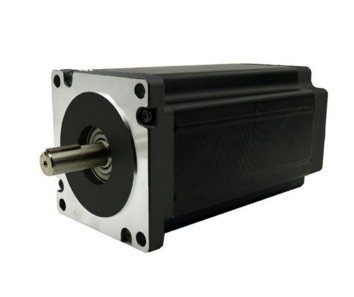
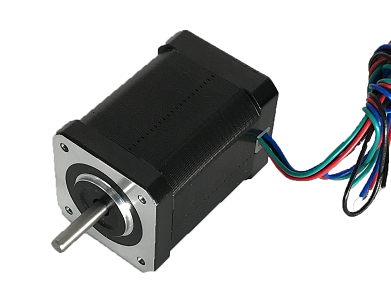
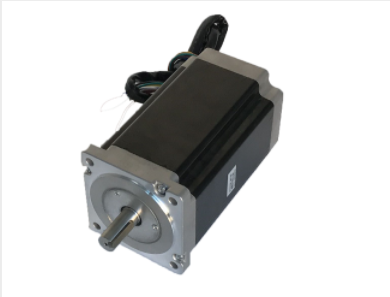
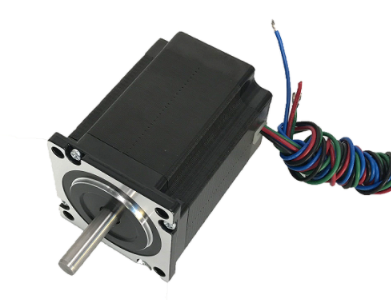

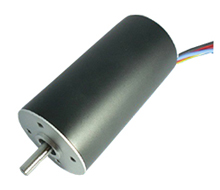
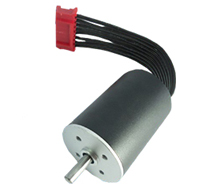
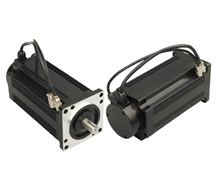
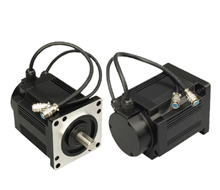
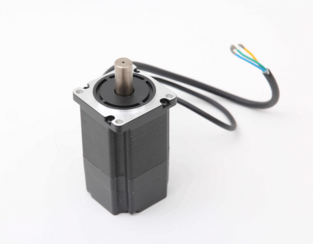



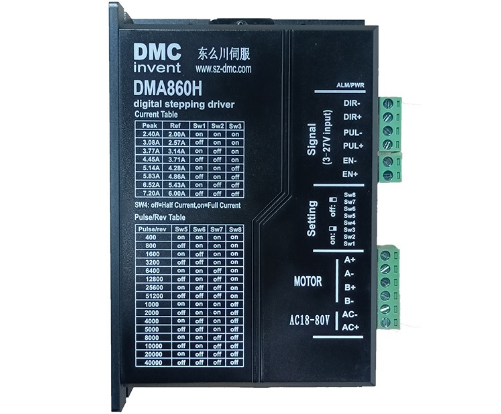
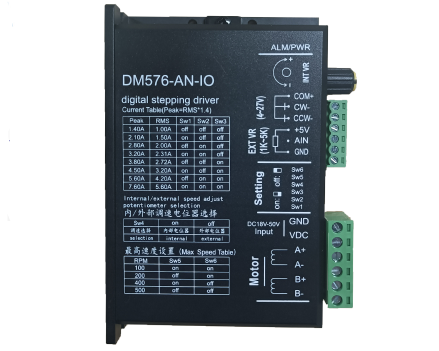
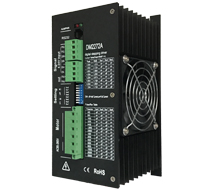
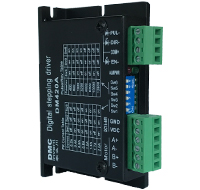
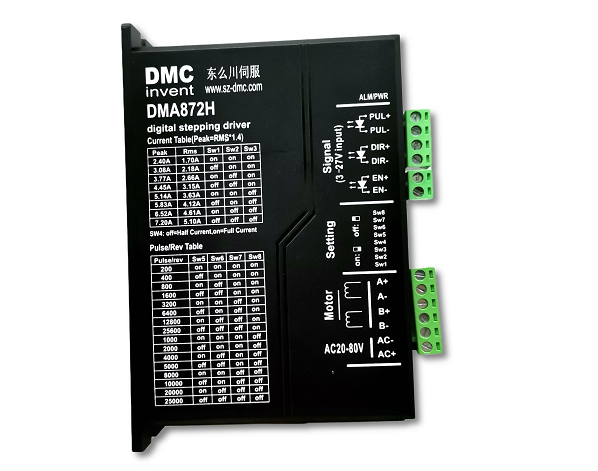

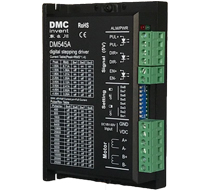
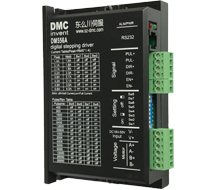
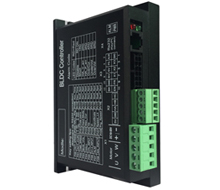
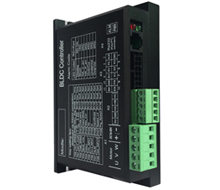
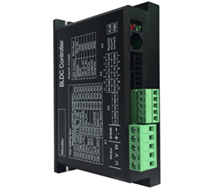
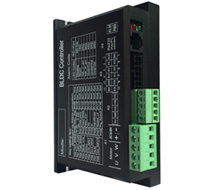
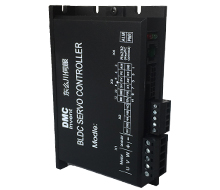
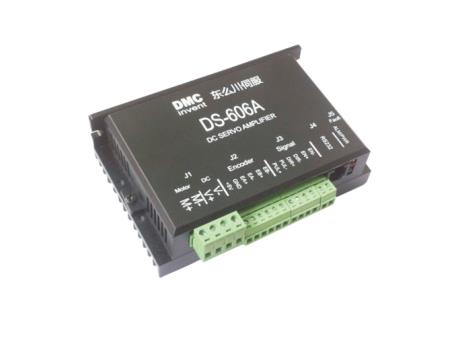
 地址 ADDRESS
地址 ADDRESS